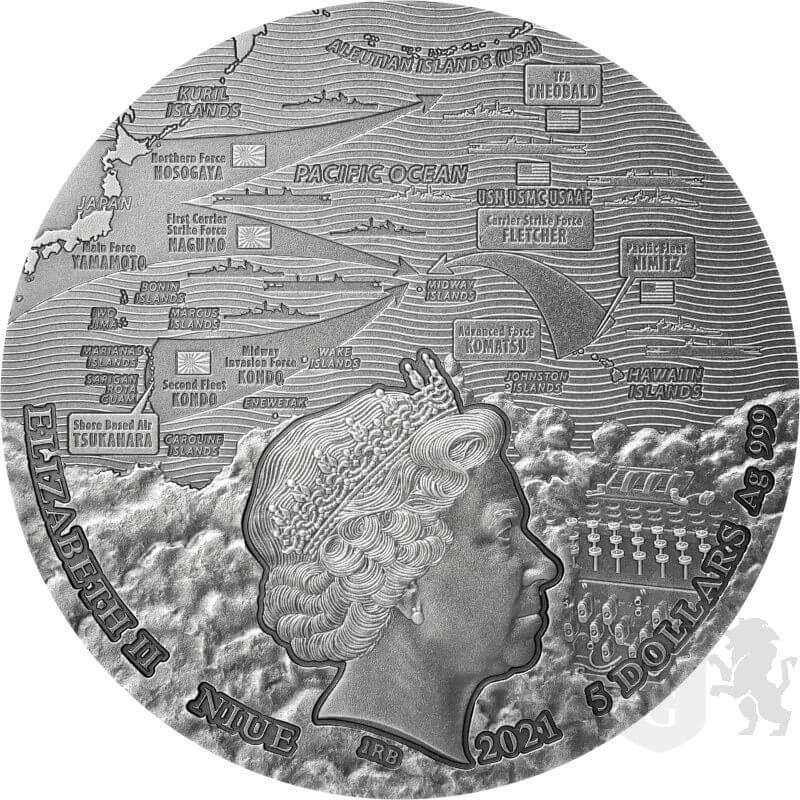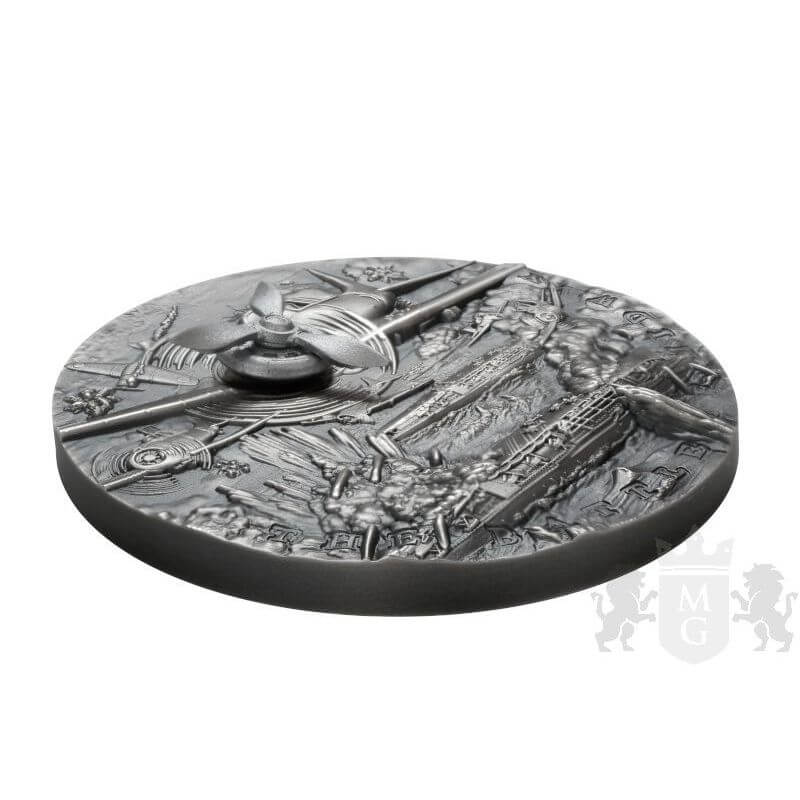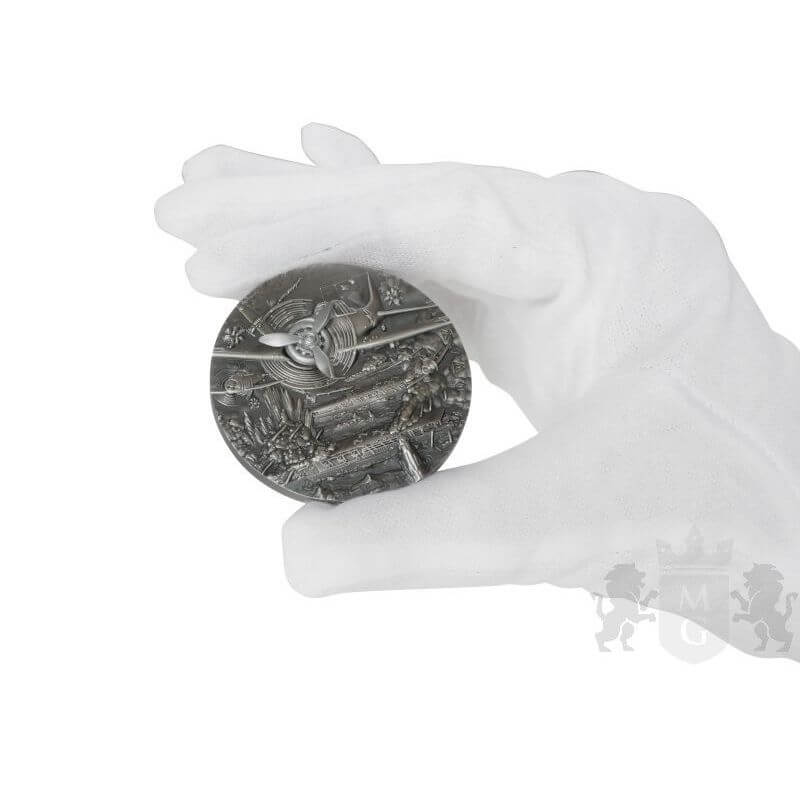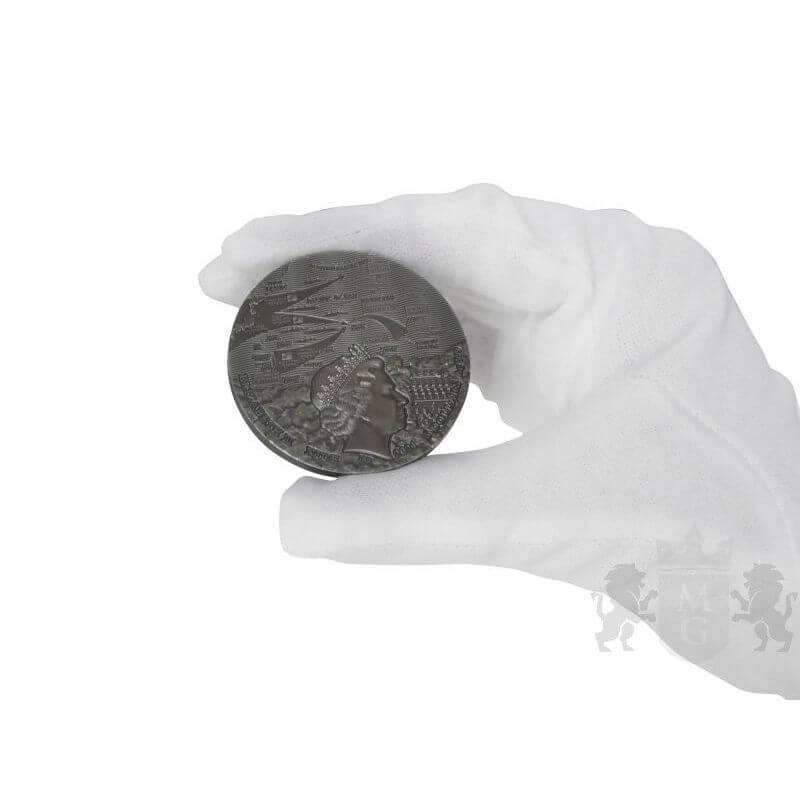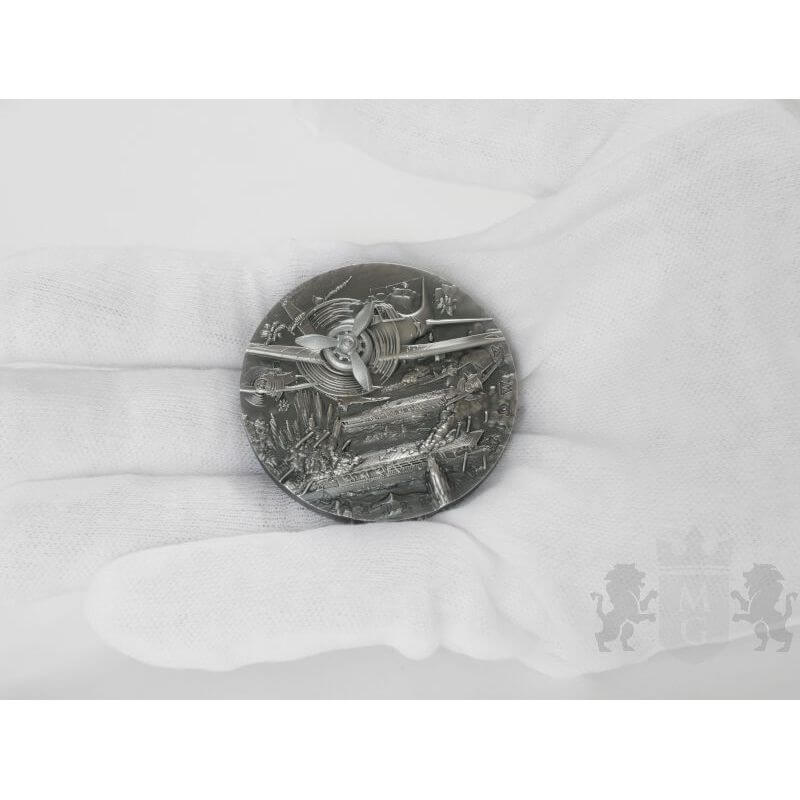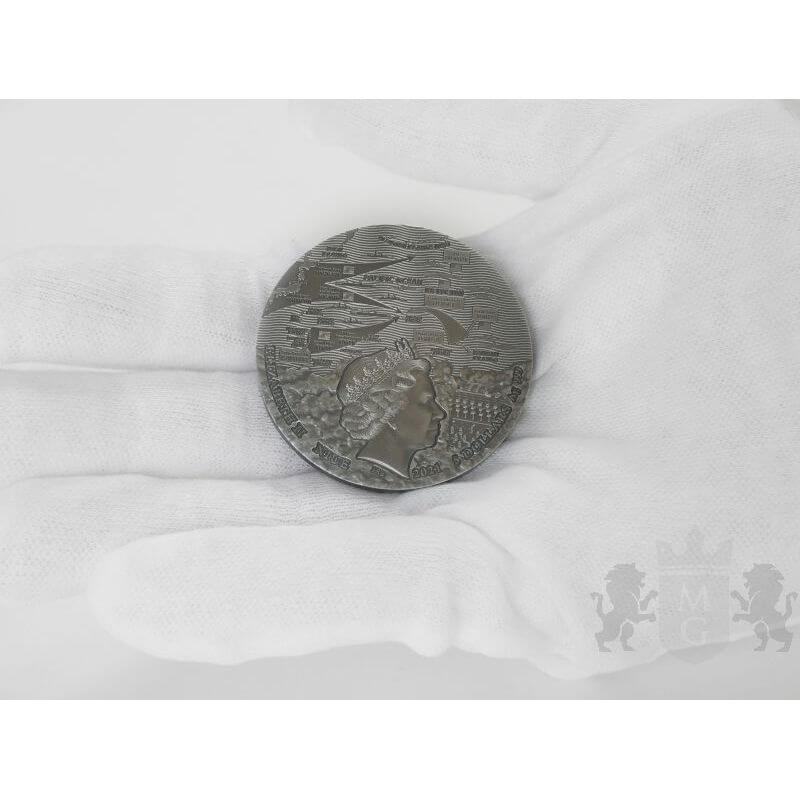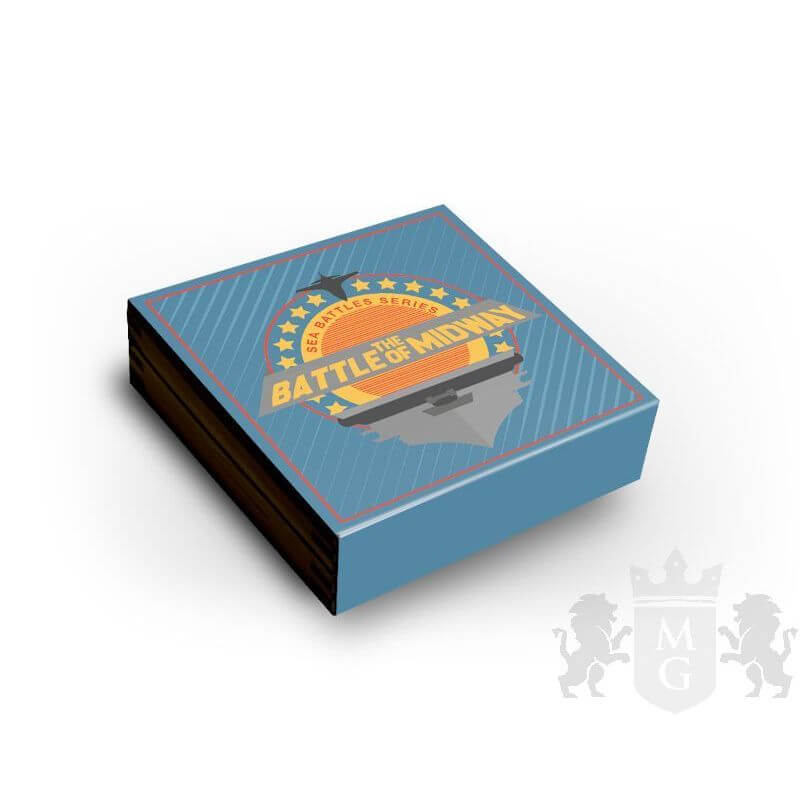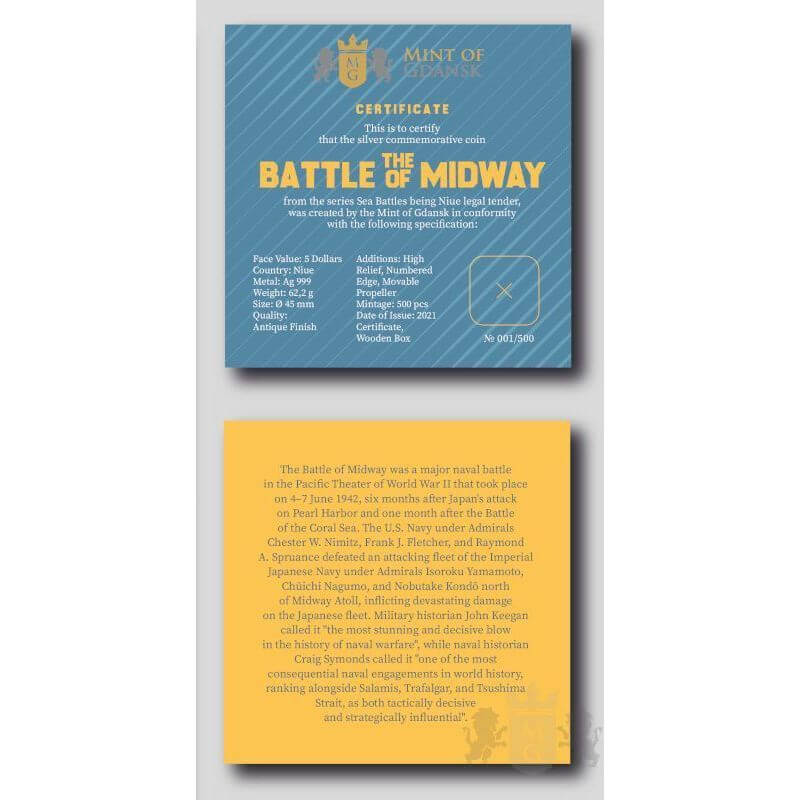2021 Niue Sea Battles The Battle of Midway 2oz Silver Antiqued Coin
Original price was: $270.00.$185.00Current price is: $185.00.
Item specifics
| Year of Issue: | 2021 |
| Issuing Country: | Niue |
| Weight: | 2 oz |
| Composition: | Silver |
| Purity: | 0.999 |
| Mintage: | 500 |
| Diameter: | 45mm |
| Finish: | Antiqued High Relief |
| Special Feature: | Edge Numbered, Spinning Propeller |
| Denomination: | $5 |
| Packaging: | Display Box w/COA |
The second coin of the “Sea Battles” series.
This coin was struck from two ounces of pure silver and is stunning in its detailing. The reverse of the coin is decorated in high relief with a beautiful engraving depicting a battle that took place on and over the Pacific Ocean. The top of the coin features an insert in the form of…a moving propeller! This innovative approach helps to highlight the role of aviation in this important battle, which marked a turning point in the Pacific War.
The obverse of the coin, on the other hand, depicts the movement of the troops involved in the war.
The Battle of Midway was a major naval battle in the Pacific Theater of World War II that took place on 4–7 June 1942, six months after Japan’s attack on Pearl Harbor and one month after the Battle of the Coral Sea. The U.S. Navy under Admirals Chester W. Nimitz, Frank J. Fletcher, and Raymond A. Spruance defeated an attacking fleet of the Imperial Japanese Navy under Admirals Isoroku Yamamoto, Chūichi Nagumo, and Nobutake Kondō north of Midway Atoll, inflicting devastating damage on the Japanese fleet. Military historian John Keegan called it “the most stunning and decisive blow in the history of naval warfare”.
Hoping to lure the American aircraft carriers into a trap and occupying Midway was part of an overall “barrier” strategy to extend Japan’s defensive perimeter, in response to the Doolittle air raid on Tokyo. This operation was also considered preparatory for further attacks against Fiji, Samoa, and Hawaii itself. The plan was undermined by faulty Japanese assumptions of the American reaction and poor initial dispositions. Most significantly, American cryptographers were able to determine the date and location of the planned attack, enabling the forewarned U.S. Navy to prepare its own ambush.
Four Japanese and three American aircraft carriers participated in the battle. The four Japanese fleet carriers—Akagi, Kaga, Sōryū, and Hiryū, part of the six-carrier force that had attacked Pearl Harbor six months earlier—were sunk, as was the heavy cruiser Mikuma. The U.S. lost the carrier Yorktown and the destroyer Hammann, while the carriers USS Enterprise and USS Hornet survived the battle fully intact.
After Midway and the exhausting attrition of the Solomon Islands campaign, Japan’s capacity to replace its losses in materiel (particularly aircraft carriers) and men (especially well-trained pilots and maintenance crewmen) rapidly became insufficient to cope with mounting casualties, while the United States’ massive industrial and training capabilities made losses far easier to replace. The Battle of Midway, along with the Guadalcanal campaign, is widely considered a turning point in the Pacific War.

